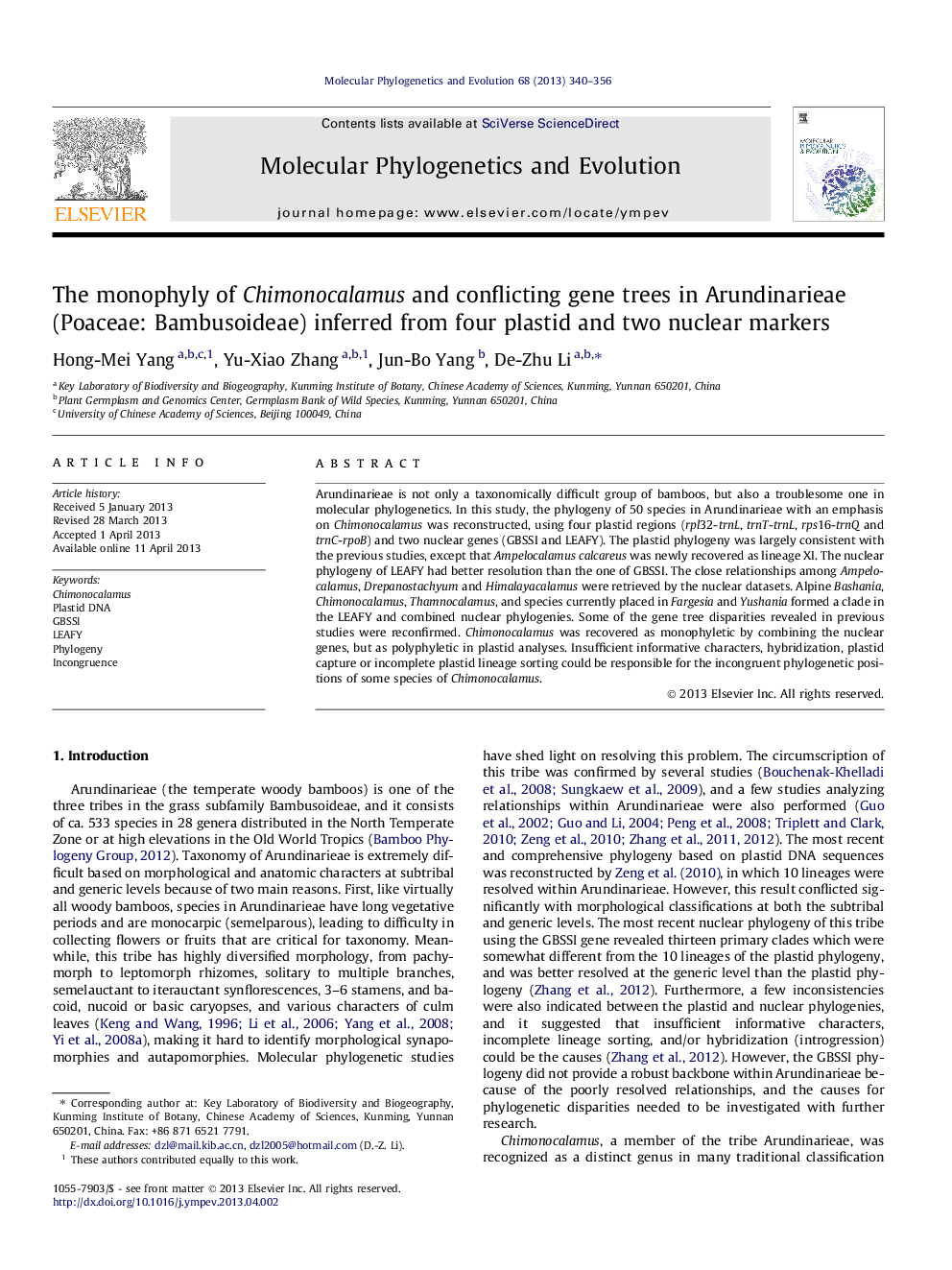| Article ID | Journal | Published Year | Pages | File Type |
|---|---|---|---|---|
| 2834002 | Molecular Phylogenetics and Evolution | 2013 | 17 Pages |
•LEAFY was used in phylogenetic reconstruction in Arundinarieae for the first time.•Conflicting gene trees were confirmed by plastid and nuclear markers.•Chimonocalamus was resolved as monophyletic in the combined nuclear phylogeny.•Ampelocalamus calcareous was identified as lineage XI within the Arundinarieae.•Ampelocalamus, Drepanostachyum, and Himalayacalamus formed a monophyletic group.
Arundinarieae is not only a taxonomically difficult group of bamboos, but also a troublesome one in molecular phylogenetics. In this study, the phylogeny of 50 species in Arundinarieae with an emphasis on Chimonocalamus was reconstructed, using four plastid regions (rpl32-trnL, trnT-trnL, rps16-trnQ and trnC-rpoB) and two nuclear genes (GBSSI and LEAFY). The plastid phylogeny was largely consistent with the previous studies, except that Ampelocalamus calcareus was newly recovered as lineage XI. The nuclear phylogeny of LEAFY had better resolution than the one of GBSSI. The close relationships among Ampelocalamus, Drepanostachyum and Himalayacalamus were retrieved by the nuclear datasets. Alpine Bashania, Chimonocalamus, Thamnocalamus, and species currently placed in Fargesia and Yushania formed a clade in the LEAFY and combined nuclear phylogenies. Some of the gene tree disparities revealed in previous studies were reconfirmed. Chimonocalamus was recovered as monophyletic by combining the nuclear genes, but as polyphyletic in plastid analyses. Insufficient informative characters, hybridization, plastid capture or incomplete plastid lineage sorting could be responsible for the incongruent phylogenetic positions of some species of Chimonocalamus.
Graphical abstractFigure optionsDownload full-size imageDownload as PowerPoint slide
